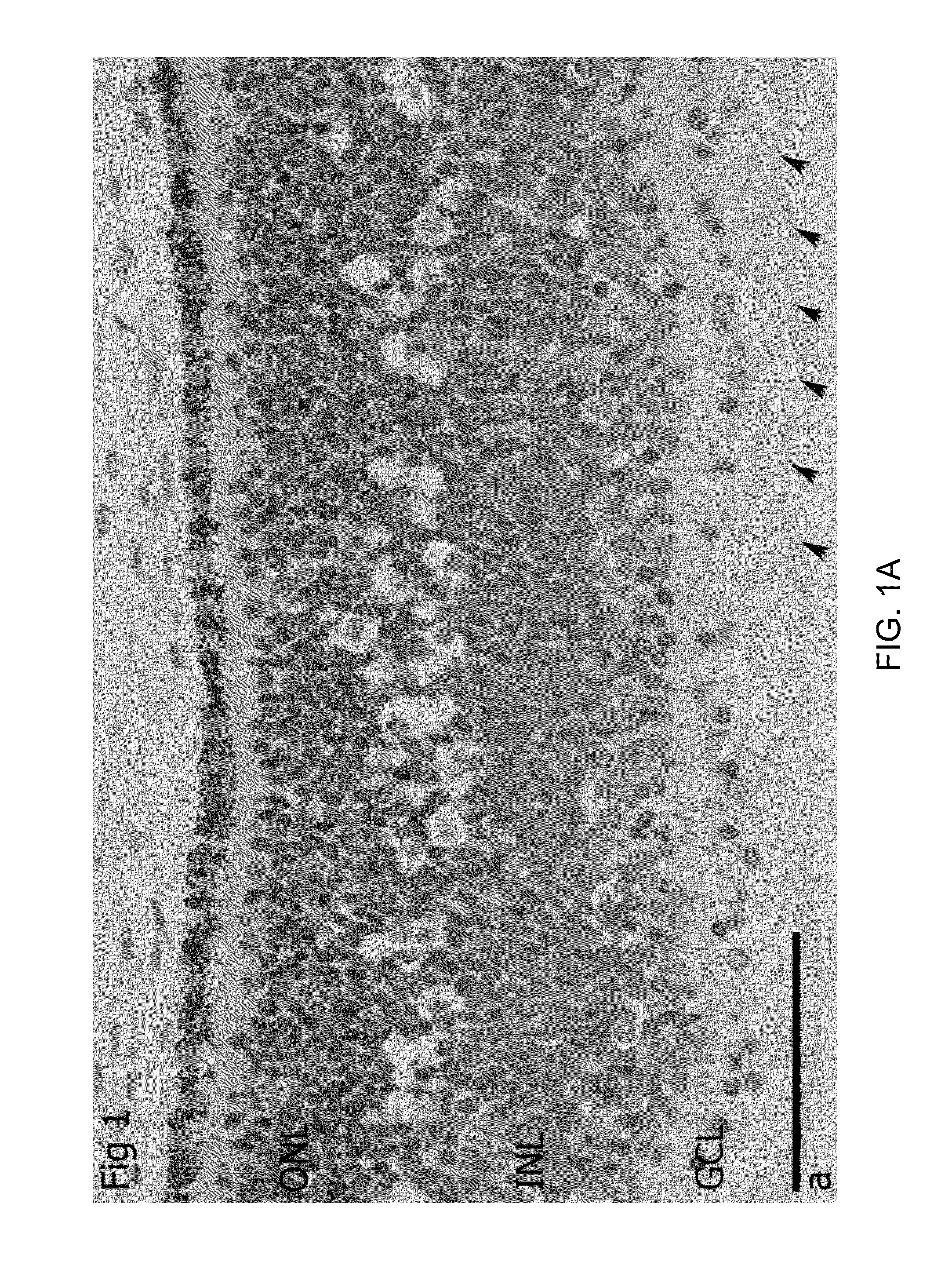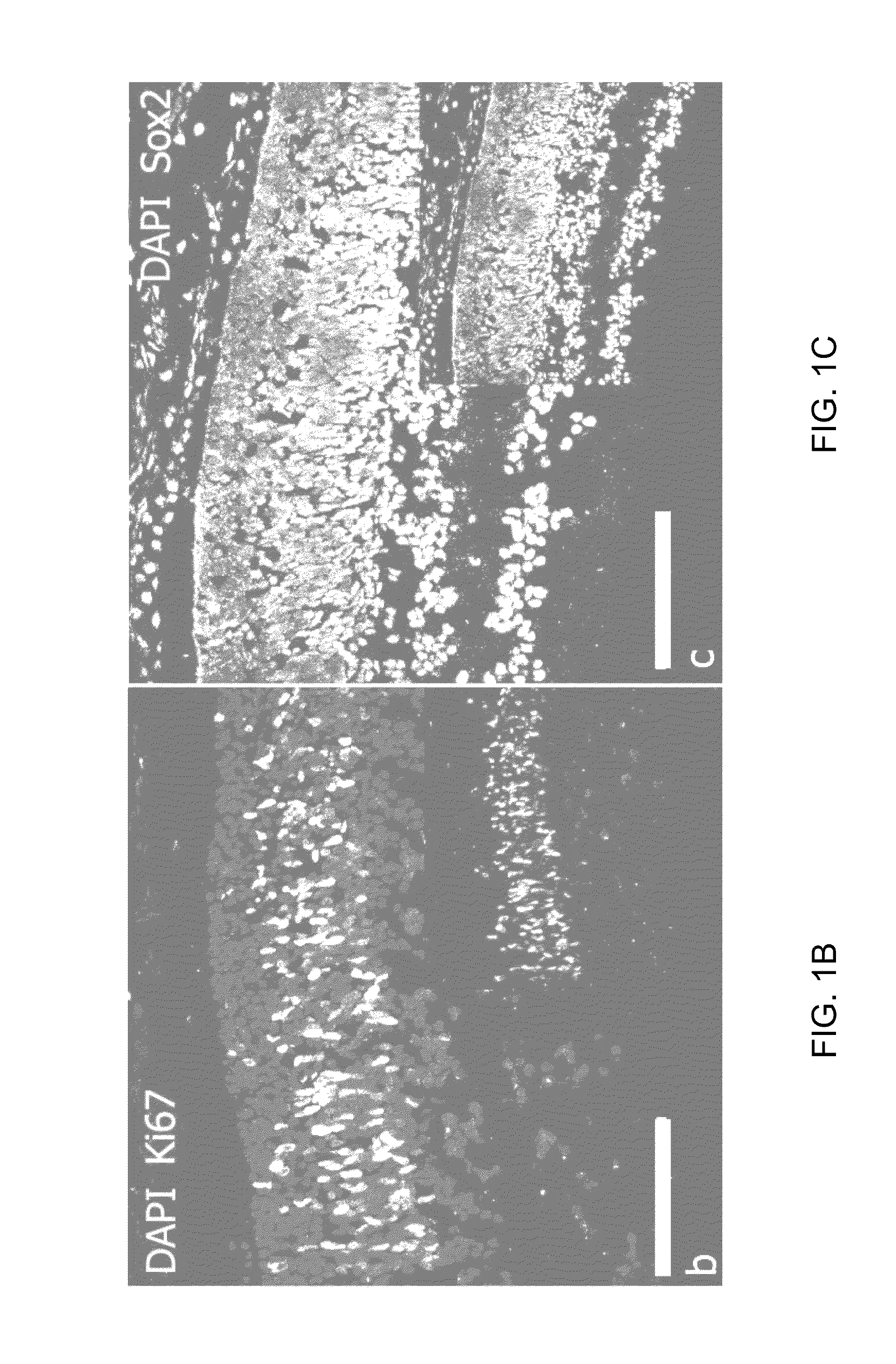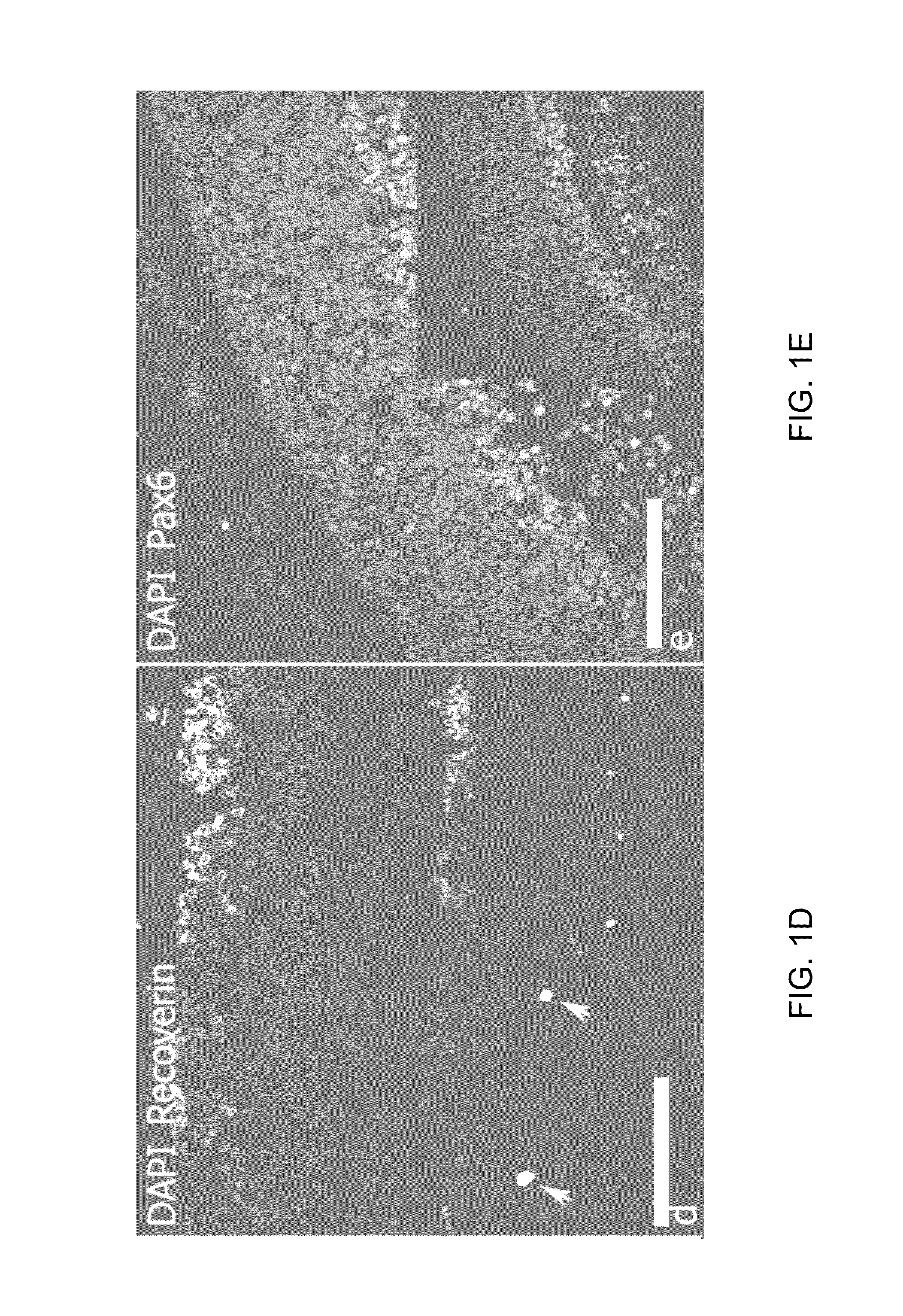Low oxygen culture conditions for maintaining retinal progenitor cell multipotency
a retinal progenitor cell and low oxygen culture technology, applied in the field of low oxygen culture conditions for maintaining retinal progenitor cell multipotency, can solve the problems of difficult integration between graft and host, inability to differentiate into functional photoreceptor cells both in vitro and in vivo, and lack of evidence that these cells are capable of integrating into the host retina, so as to enhance the expression of retinal progenitor cells and maintain the multipotency of cells
- Summary
- Abstract
- Description
- Claims
- Application Information
AI Technical Summary
Benefits of technology
Problems solved by technology
Method used
Image
Examples
examples
Materials and Methods
[0077]Retina Morphology
[0078]The morphology of the neural retina at 20 weeks gestational age was investigated. One eye cup was fixed in Karnovsky fixative, embedded in plastic and cut (2 um thick) with H&E staining One eye cup was fixed in 4% PFA, embedded in OCT, cryosectioned (6 um thick) with further immunohystochemistry for Ki67, Sox2, Pax6, Recoverin, beta3-tubulin, laminin, Opsin Red / Green, Opsin Blue, Rhodopsin, Calbindin and mGluR6.
[0079]Cell Isolation
[0080]hRPCs (human retinal progenitor cells) were isolated as described, with small modifications, in the following references: Klassen, H. J. et al., Multipotent Retinal Progenitors Express Developmental Markers, Differentiate into Retinal Neurons, and Preserve Light-Mediated Behavior, Invest. Opthalmol. Vis. Sci., 2004, 45(11), pages 4167-4173; Klassen, H. et al., Isolation of Retinal Progenitor Cells from Post-Mortem Human Tissue and Comparison with Autologous Brain Progenitors, J. Neuroscience Research,...
PUM
| Property | Measurement | Unit |
|---|---|---|
| pore size | aaaaa | aaaaa |
| concentration | aaaaa | aaaaa |
| concentration | aaaaa | aaaaa |
Abstract
Description
Claims
Application Information
 Login to View More
Login to View More - R&D
- Intellectual Property
- Life Sciences
- Materials
- Tech Scout
- Unparalleled Data Quality
- Higher Quality Content
- 60% Fewer Hallucinations
Browse by: Latest US Patents, China's latest patents, Technical Efficacy Thesaurus, Application Domain, Technology Topic, Popular Technical Reports.
© 2025 PatSnap. All rights reserved.Legal|Privacy policy|Modern Slavery Act Transparency Statement|Sitemap|About US| Contact US: help@patsnap.com



